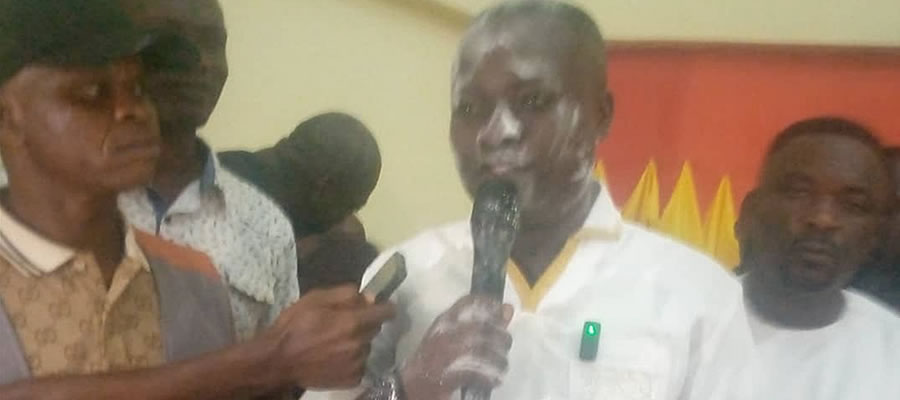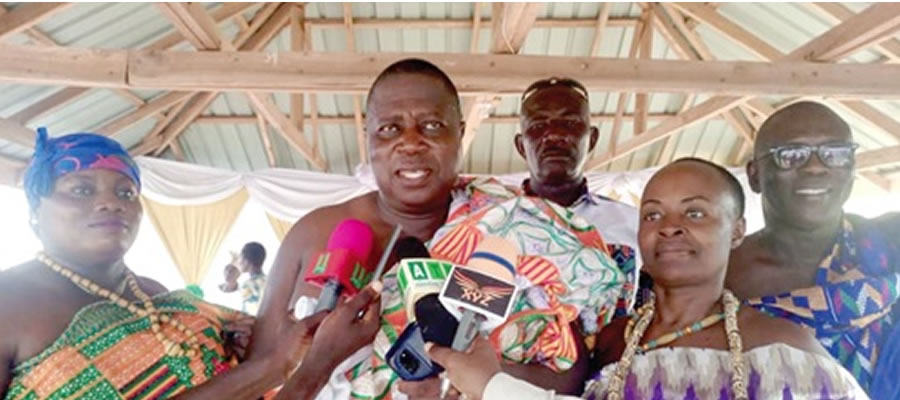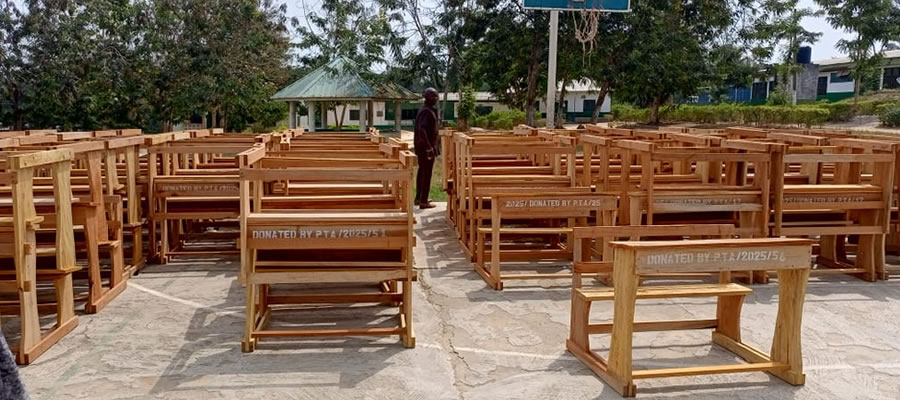

Water and Sanitation, Drainage and waste management
Drainage
Due to the rural nature of the District, not much focus has been placed on drainage as there exists lots of bare lands to carry running water. There are countless communities and settlements which do not have proper drainage systems. Communities such as Darmang, Kruwa and Ongwa have serious drainage issues and as such have had the misfortune of experiencing massive erosion of lands especially around buildings in water ways.
Disposal of waste water after bathing or washing are not also done properly accorss the District due to lack of drainage systems, these waste waters are poured on the bare grounds and expected to dry up. This situation calls for an elaborate scheme to design drainage systems for the various communities especially in communities which have structures in the water ways.
Water The main sources of water used in the District are small town water systems, mechanized boreholes, boreholes, wells, rainwater, river/stream/spring, dugout and others.
There are about 186 boreholes in the District. Of the number, 145 are functioning and 41 non - functioning. The District also has 26 hand-dug wells with pumps of which five are not functioning. 17 out of the functioning are covered as indicated in table 7. This situation really calls for the need to revive the WATSAN teams, build their capacity and strengthen the relationship among the major stakeholders to ensure the proper maintenance of the facilities.
Table 7: DATA ON WATER SYSTEMSSource: DWST, ASDA 2016
About 62% (64,681) of the population have adequate potable water, whilst the remaining 38 % (39,612) depend on unsafe water sources.
The above is further corroborated by the 2010 PHC report which identified Assin South as one of the District with the proportion of households (62.4%) who enjoy potable water from mechanized pipe systems within their compound and 37.6% access the water outside their compounds. It is therefore not strange that cases of water borne diseases such as, diarrhoea, bilharzia, intestinal worms, and cholera do occure in the District. However, under the IDA Sustainable Rural Water and Sanitation Programme and the UNICEF Institutional Water and Sanitation Support programme, more access is being created to water facilities.
SANITATION
The sanitation situation in the District is regarded as an issue of concern due to high incidence of Open Defecation (OD) and the heaping of mountains of refuse at the major commercials centres in the District.
Sanitation facilities are of critical concern in the household environment. These include:
(a) excreta or human waste disposal
(b) garbage disposal and
(c) Household liquid waste and storm water disposal.
1. TOILETS
The 2010 PHC identified the following as the types of toilet facilities used in the District.
1. Water closet
2. Pit Latrines
3. Enviro-loo
4. KVIP
5. No facility (Free range)
The use of Water Closet is minimal (1.6%) due to the limited coverage of pipe water system in the entire District.
According to the 2010 PHC about 36% of the population use pit latrine, 35.7% use public toilet 9.9% use KVIP, 1.3% use the Pan latrine, 0.1% use toilet facilities of other households and have as large as 16.1% defecating anywhere, which really poses serious health hazards to the inhabitants.
A report from the District Water and Sanitation Team (DWST) as shown in table 24 also shows the type of facilities available in the District
Table 8: Data on Toilet Facilities
Source: (DWST/EHSU)
According to District Water & Sanitation Team (DWST) report, all the 5 Aqua Privy and some of the KVIP toilet facilities are now in very dilapidated conditions because of lack of regular maintenance. Indeed, the two Aqua Privy Toilets at Assin Manso and Nyankumasi-Ahenkro are out of use. Most of the public toilets are not kept well because of certain cultural beliefs. The report further indicated that only 0.12% of the population use hygienic toilet facilities. The main challenges here are:
Inadequate toilet facilities, certain cultural beliefs, the clayey nature of the soil and government’s policy against the construction of public toilets.
However, it must be stated that Community Water and Sanitation Agency / UNICEF/JCLS. in collaboration with the District Assembly and Communities have and are constructing many toilet facilities in most of the communities.
ii. SOLID WASTE DISPOSAL
Solid waste is disposed of in several ways but the main way is that households temporary store their waste in baskets and other plastic containers before sending it to public dumps. This is applicable to about 57.5% of the households in the District.
According to 2010 PHC, about 12.5%, of the population dump their waste indiscriminately, whiles 5.2% bury their waste.
The market centres at Assin Andoe and Assin Nyankumasi have refuse heaps of significance concern to the D.A
There are however efforts to acquire a final disposal site and tractors to manage the waste. ASDA is also executing the waste management programme commonly called ZoomLion under the YEA.
iii. WASTE WATER DISPOSAL
About 32.9% and 50.9% of the population dispose their wastewater in the streets and compounds respectively. 2.2% of the population disposes their wastewater into public drains.
From the foregoing, it is obvious that sanitary conditions in the District are poor. Functions of Environmental Health and Sanitation Department include:
· Cleaning thoroughfares, markets and other public space.
· Inspection and enforcement of sanitation regulations
· Undertaking Environmental Health Education
· Controlling rearing and straying off animals.
At the community interface, members identified the following as some of the challenges facing the sector.
· Inadequate toilet facilities
· . Inadequate sanitary labourers
· Low maintenance culture
· Absence of adequate final disposal sites
· Absence of drainage systems
Date Created : 10/8/2024 12:00:00 AM











 facebook
facebook
 twitter
twitter
 Youtube
Youtube
 +233 593 831 280
+233 593 831 280 0800 430 430
0800 430 430 GPS: GE-231-4383
GPS: GE-231-4383 info@ghanadistricts.com
info@ghanadistricts.com Box GP1044, Accra, Ghana
Box GP1044, Accra, Ghana